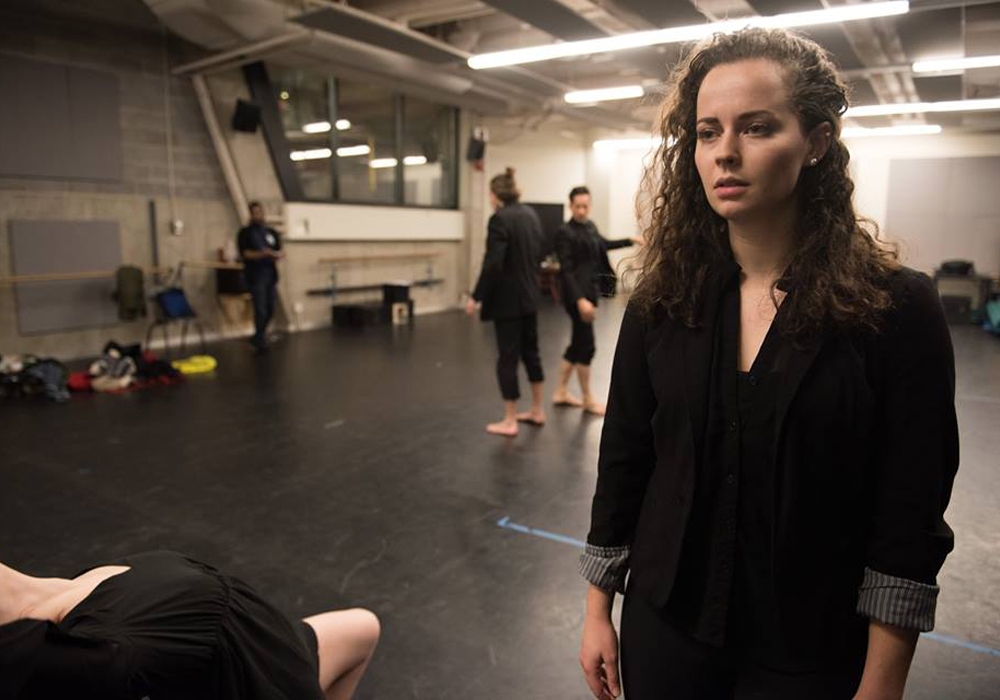Zack Fenech, Staff Writer
Featured image courtesy of Then They Fight Theatre
Excalibur: What is The 10/10/10 Project? Can you explain what it is about?
Jordan Laffrenier: The 10/10/10 Project was developed by Lucy Powis, Aaron Jan (BA theatre studies 2015) and myself in 2014. [It was] a way to bring artists together without ego, so that they would only communicate through process in their creation of work.
The way it worked this time was as follows:
Five filmmakers and two visual artists were give the prompt of a “Confession”.
Those five films and two pieces of visual art were then paired with 10 choreographers, who created 10 dances.
Those dances were then given to nine composers, who created nine soundscapes.
Those soundscapes were given to 10 writers who wrote 10 pieces.
These 36 pieces were then combined into one piece and narrative by Lucy Powis and myself.
It’s worth noting that this large group of artists (all Canadian and one from the United Kingdom), includes York faculty including Michael Greyeyes (theatre), B.W. Powe (English), and David Goldstein (English).
What we found was that all of the pieces had some usage of water or drowning imagery in it. We created a narrative about a theatre company, trying to honour their dead by creating one last play, as per the instructions of their friend’s suicide note. With this metanarrative, we’re interested in exploring how people grieve and the irony of public versus private expressions of loss. In this age of publicity and constant media, what’s the appropriate way to say goodbye to someone we loved?
E: Directing such a production, especially working with so many different individuals seems ambitious, but difficult. How was it working with so many different artists in different mediums?
J: [Hard, but] what made things easier this time was [that] I was able to go through all 36 pieces and make a “script” with dramaturg Lucy Powis. Having mounted this show last year at the 2015 Toronto and Hamilton Fringe [Festivals] as a producer and actor, the feedback we received from our peers, the media, as well as a good two-hour chat with Factory’s artistic director, Nina Lee Aquino, inspired us to be able to cut material we were given from the artists, but also to give the show more of a narrative focus. I think Nina said that if we “weren’t showcasing our artists in the best way possible, we were doing them a disservice.”
We also learned something really valuable about the show itself: that once the show started, audiences didn’t care about our process. It was our product that was more important – the narrative or experience they had in the theatre. I think this may be a product of our director of theatre training, where we’re so processed focused that we sometimes lose sight of the bigger picture: what the audience consumes.
E: What are some of the best and worst moments that you’ve had working on this production? What barriers did you overcome?
J: 10/10/10 will always be a scheduling nightmare. This was a problem for the previous director, as it was for me. Essentially, what you’re doing is coordinating 37+ people with different schedules to get something done on time. Once that phase is over (and the majority of the pieces will be late), you have to hire a cast and coordinate all 10 choreographers to come into rehearsal on specific days to teach the cast. Naturally, people’s schedules change, so I think probably the worst moment working on the production was sitting in rehearsal early in the process and realizing that the next week’s itinerary would probably have to change within three days with pending responses.
I think one of the best moments was just this past week when we finally did a run with the sound featuring our 10 composers and projections featuring our five filmmakers with sound designed by Aman Banwait, (BA theatre 2016), and projections designed by Peter Howie, (BFA film production, 2016). The show completely changed and the cast and production team could see the bigger narrative that we’re creating.
E: On a closing note, is there any advice that you could give York students whom have chosen a career in the performing arts?
J: My advice to York students is to think beyond York. This school is a great place to network, but if you’re only mounting productions up here and remaining on campus, you’re doing yourself a disservice. Try to see one play a week, no matter what stream you’re in (for those of you who can’t, see more than one play in the weeks you’re able to). Audition for things constantly, train and find out where you can train and mentor. Don’t let streaming or rivalries sacrifice friendships or relationships. You never know who you’ll be collaborating with in the future. Reach out to artistic directors and theatre companies in the city to chat. You’d be surprised who’s willing to talk to you as an emerging artist!


